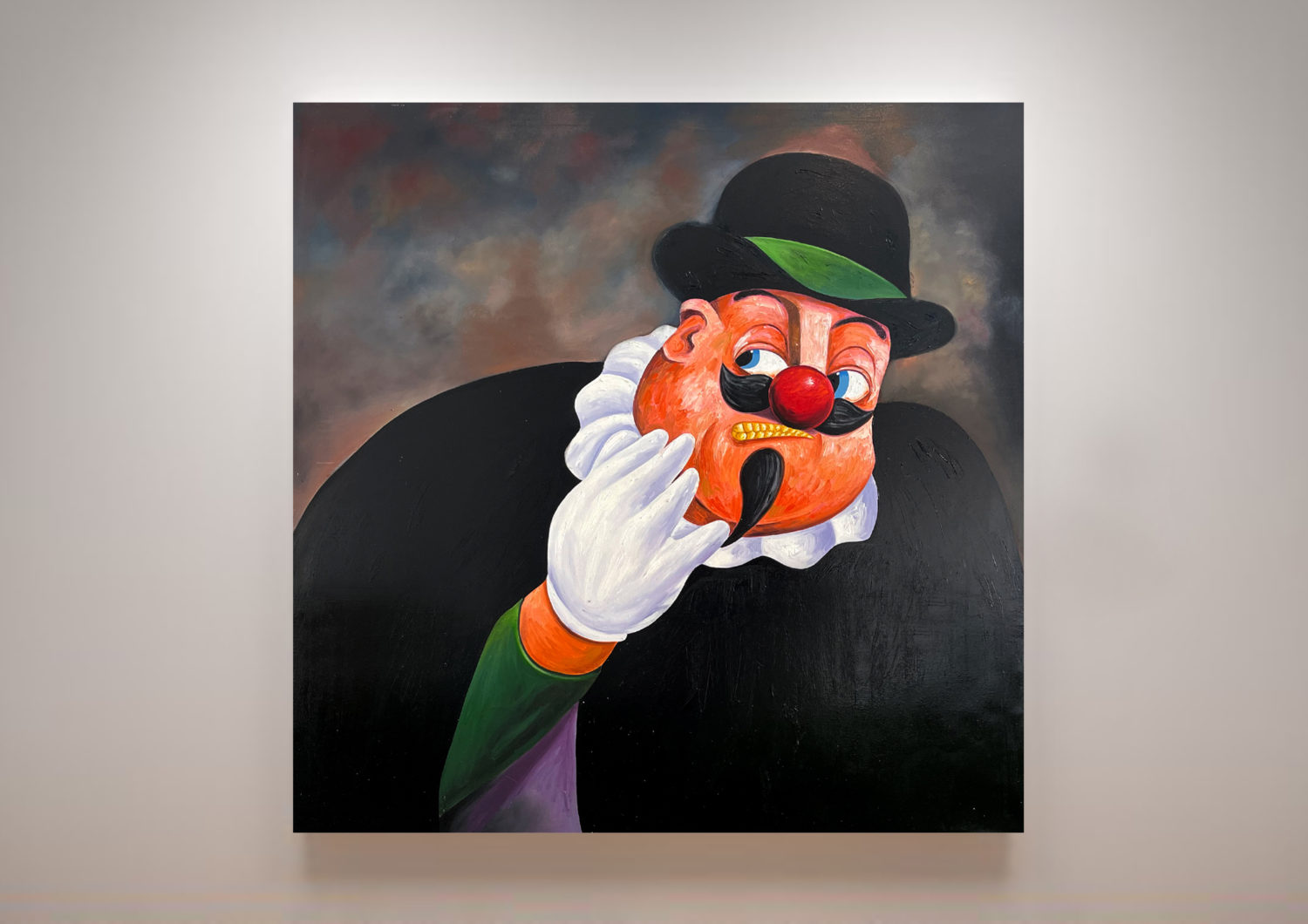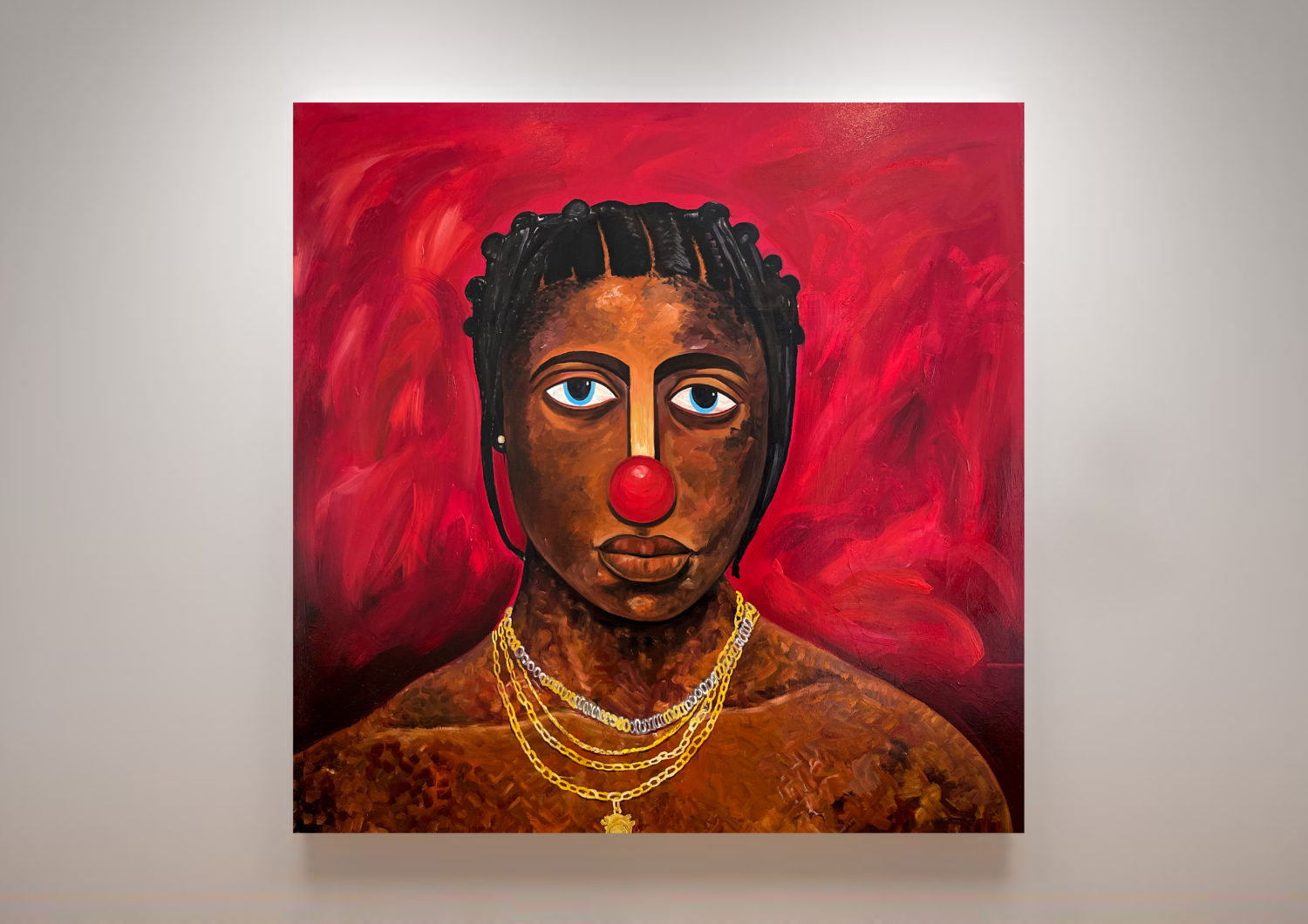Painter and filmmaker Emmanuel Kazadi is taking the art world by storm. Born in America to Congolese parents, young Kazadi’s natural talent has been nurtured since the first whisper of its bloom.
His hard-working parents sent him to a prestigious boarding school in Paris, France, where he was raised to pursue his artistic dreams, encouraging an inquisitive mind and curiosity for life. It was there that he learned to view the everyday through the lens of an artist, leading to his celebrated collections today.
Following his tenure in France, Kazadi graduated from Hofstra University with a major in Fine Arts. His first post-grad project, the short film Enzo Bleu, was well received. Made completely independently – Kazadi wrote, produced and animated the film himself – it caught the attention of Creative Arts Agency, which led to his signing with CAA in 2020. He is now working with NBC Universal and Seth Macfarlane’s Fuzzy Door to turn the short film into a series. Kazadi has also had his work featured in Aziz Gallery.
L.A. Weekly interviewed the accomplished young artist to learn more about his past, process and latest exhibit, “Everybody Loves You, But Nobody Likes You!”:
How has your French childhood influenced your art?
France to me is the basis of everything. I feel very connected to the mood over there; there’s a famous quote that says “France is heaven inhabited by people who think they live in hell” — that juxtaposition is essentially the same one found in my works. They are very joyful and colorful in tone, yet the characters appear pessimistic and somber in expression. There are obviously a wide range of themes and messages I communicate in my art, but at its most elemental stage I am just sharing the melancholy you know… sadness for no obvious cause.
Why did you choose to pursue Fine Arts as a major?
Well it actually started out as a minor. I was a literature major first and eventually decided to double-major in both. The most fulfilling part of my Fine Arts curriculum was getting in classrooms with professors who I felt were honest. What I mean by that is that even if they were much older than I was, they approached everything with the same spirit of naiveté that I had. I truly saw myself in them; they helped me realize that I’ll never have every single thing figured out in art, work, life… and that that was okay. I think figuring that out is figuring life out.
What cartoons influence you?
Every single Disney project from the mid 20s to 66: Pinocchio, Bambi, Snow White etc… I like the later Disney stuff too, I’m not a purist — but there is just something about the projects they put out when Walt was alive that, in my opinion, they haven’t been able to replicate. I also really like the Looney Tunes from that same era. I think work from that era inspires me because a lot of what we see in them are actual paintings; almost all those backgrounds are hand-painted. In more recent stuff I really enjoy Family Guy. I’m a big fan of the show all around, but I have to note that the bright and vibrant colors certainly inspire me in painting.
Can you tell us a bit about your artistic method?
I draw everything on paper or on my computer first. Over the years I’ve amassed so many drawings that when I get to the canvas, I just pick from my vault of drawings. A lot of my work in this show comes from drawings I drew years ago! What was also special about painting for this show was that I got to work on almost all 20 pieces simultaneously. I would do a little bit here, a little bit there, over there and then back. Which isn’t how I typically paint. I usually work on a painting from start to finish, but the fact that I knew that the 20 pieces were for one show made it easier for me to go back and forth.
What inspired the name “Everybody Loves You, But Nobody Likes You!”
It’s actually from Bojack Horseman, another great animation reference. A fuller quote is “everybody loves you, but nobody likes you… and that is the loneliest feeling in the world”. As a kid I moved around a lot, and my parents would always tell me that would be an asset for me growing up, that people would admire me for it — and they did. However, it also makes it hard to form and develop deep relationships, and without deep relationships you’re essentially lonely. All the friends I made at all the schools I went to thought I had the coolest life, but I felt like no one knew me past that. No one actually knew Emmanuel because there was never enough time.

How long did it take you to complete the 20 pieces in your exhibit?
It depends, if you mean from inception to finished work then that’s years of work. Painting the canvases took four months of almost total self-isolation and around the clock work. It was similar to when I animated my short film Enzo Bleu, I holed up and worked for eight months straight with zero distractions. It has truly become my style of work. I love that my friends and family finally understand that that’s just how it has to be for me.
Why are they all sized 7×7? Is there any meaning behind that?
That’s a very interesting question; I never saw the actual numerical value of a painting’s size as an ally to express myself until now. My work has a lot of religious imagery in it, and I know that in scripture seven is often the number of completion and perfection — God rested on the seventh day. Maybe that was in my subconscious all along, who knows. Consciously, I’ve always preferred to paint larger pieces. To me, paintings need to be big.
Which is your favorite piece in the collection?
I can’t say I have a favorite, all 20 pieces are like 20 children of mine. Each piece has made me feel something that the next one couldn’t.
What do you hope people take away from your art?
I am aware that I am unaware of all the things my paintings can do. All the ways they can affect people. So really I just want to let them do what they want to do. Like I said, they’re like children I have birthed, I do not own them anymore, it’s up to them to do what they’re compelled to do now.

What is your advice to aspiring artists?
My advice, which is advice I take for myself as well, is to have faith in the little voice inside of you that compels you to simply be an artist — in the way you paint, eat, sleep, exercise etc… To think less and to do more, and eventually being able to see what that little voice was getting you to accomplish in the first place. I’m still figuring out what I’m accomplishing and I’m enjoying every bit of that discovery.
What’s next for you?
Right after this show I’m shooting a live action short-film — for which I am very excited. I’ll also continue to develop my short film Enzo Bleu into a series with Fuzzy Door and UCP; and sometime next year, when my schedule clears up I’ll start painting again!
To learn more about the exhibit and view Kazadi’s work, visit emmanuelkazadi.com
The post Emmanuel Kazadi Debuts “Everybody Loves You, But Nobody Likes You!” At Innerspace Gallery appeared first on LA Weekly.


0 Commentaires